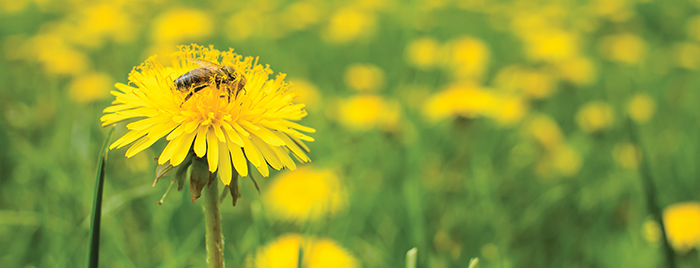Sometimes numbers can be startling.
For instance, natural rubber is used in 50,000 commercial products, including 400 medical devices, because of its unique properties with regard to resilience, elasticity, abrasion and impact resistance, efficient heat dispersion and malleability at cold temperatures. It’s a critical raw material that developed countries simply can’t live without.
How about another number: 1.5 million, as in metric tons of natural rubber the U.S. may suffer in supply shortfall by 2020. That is unless Katrina Cornish, Ph.D., has anything to say about it.
The Endowed Chair and Ohio Research Scholar of Bioemergent Materials in the Department of Food, Agricultural and Biological Engineering at Ohio State is working to develop a domestic natural rubber crop—Taraxacum kok-saghyz, also known as TK, Buckeye Gold and the Rubber Dandelion —in Ohio and the U.S.
“Rubber is a critical raw material, and we should care about doing this because it will help prevent a catastrophic depression and an economy collapse in the developed world,” Cornish said. “As we’re able to produce (TK) on a commercial scale, we’ll make hundreds of thousands of new jobs for the U.S.”
The dandelion rubber crop, a cousin of the common dandelion, is being investigated and developed as a supplement or replacement for certain types of imported natural rubber and produces high quality rubber for the rubber industry – especially tire manufacturers.
One of the key first steps to getting TK domesticated so it can be grown as a real crop is genome sequencing. TK is genome resource poor because of its large genome size and large fraction of highly repetitive DNA. That’s where the powerful Ohio Supercomputer Center clusters come in.
“OSC is allowing us to assemble and annotate genomes as well as validate markers, and it’s led to discovery,” Cornish said. “Without OSC we would be terribly dead in the water.”
Cornish’s project with OSC focused not only on genomic DNA and sequencing, but also an application of these resources to TK domestication and breeding.
“What we’re developing are high-tech applications of the annotated genome for crop domestication,” Cornish said. “If we look at wild TK plants and ask, ‘What would we like it to be?’ If it is something that can be edited, we can go to a relative and look for genes to modify and edit to produce the trait we want.”
Project Lead: Katrina Cornish, Ph.D., The Ohio State University
Research Title: TK whole genome sequencing
Funding Source: The Ohio State University
Website: cornishlab.cfaes.ohio-state.edu

